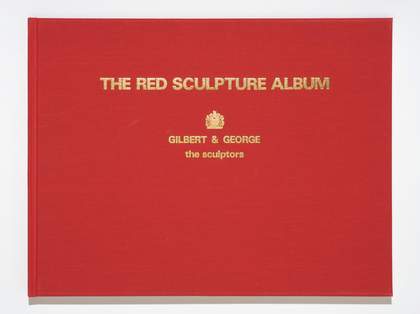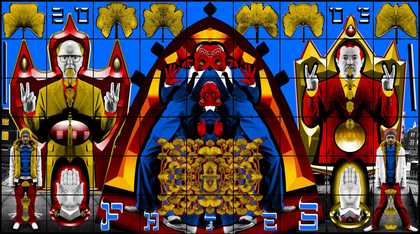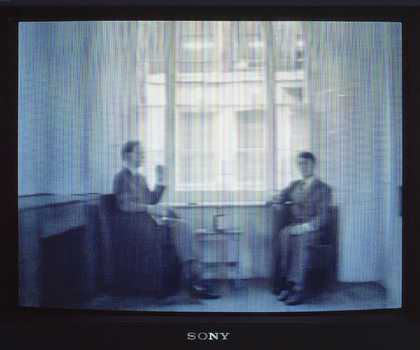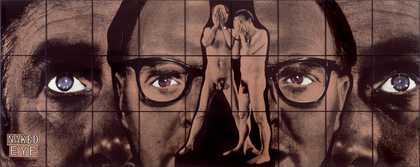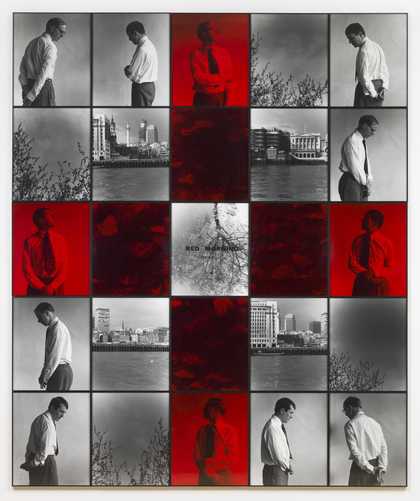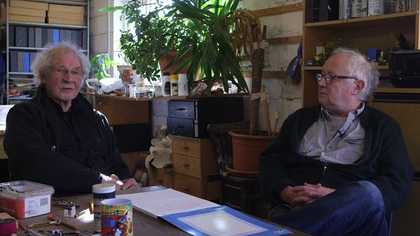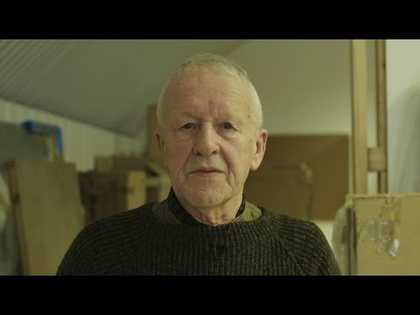Gilbert & George invite us into their studio to discuss a new group of pictures, Six Bomb Pictures 2006, made specially for their current retrospective at Tate Modern. As well as providing a fascinating insight into their working methods, they reveal why they want to de-shock rather than to shock people.
George: Here we have our six bomb pictures which have just finished. There is one trip taking five other pictures and we are very proud that we were able to deal with this very difficult subject in a way that it is they are commemorative the pictures they deal of course with the media and its approach to us but also with the human tragedies involved.
Gilbert: This one is taken from the….this image is taken in the cemetery of Spitalfields.
George: We always say that we are here to de-shock rather than to shock that is our theory that we can deal with the difficult subject in a humanistic way that doesn’t send people running out of the museum or running out of the gallery. Some artists are interested in that they like it if the police are called in and things, we always want to get away with it.
Gilbert: But that has to be extreme if not invisible. Like all the old artists to be totally extreme in some way if not it is invisible you don’t see it and that’s what you want them to see it that’s why you make them more powerful than it should be. You are what you call exaggerated life to make it more visible. I think the artists always have done that.
George: And we think it is quite right that we as artists can deal with the subject of the London bombings or bombings in general because the newspapers and television and radio programmes they deal with it, the church leaders, the politicians all deal with it, we think we can deal with it in a more humanistic, more timeless way, we never used the subject that doesn’t have what we call the moral dimension, we would never use something in a picture because we like it or we dislike it, its only when it has the depth of the moral dimension. The best example of that is we took for years images of chewing gum on a street, we didn’t know why, we never used them and in another two years later we took some more images of chewing gum on the street, I think it went on for four or five years and then one day we were taking images of chewing gum on the street and we suddenly got it, each chewing gum comes from the individual person, it was a life, maybe they are dead, the chewing gum stays there for a long time, they have their loves and their fears and their hopes the same as everybody….and those chewing gums remained from that and that is the moral dimension.
Gilbert: Every time we would go like when we started to take this kind of images from the Evening Standard poster we have been doing them for maybe four, five years because at the beginning we don’t understand what they mean to us so we have to take them again and again and again and again and again and then they become what you call yes we understand that subject and it is morality, it is how we change the world, how we want to live different in different ways, that’s all what we are alone here we are trying to find a way to live with each other I hope.
George: Its just as Gilbert says it’s not finding or collecting the subject matter that tells us it’s the actual taking the images of it.
Gilbert: Until they mean something.
George: When we peer into the lens after taking five hundred, six hundred, seven hundred different Jesus’ slowly we begin to explore ourselves through looking at that subject matter and then they take on the meanings that are inherent that are there and then hopefully we are able to send that message through the picture to convey some of our thoughts and feelings in relation to the viewer’s thoughts and feelings.
Gilbert: And every picture changes from mid time, the meaning changes like….
George: The picture stays the same….
Gilbert: The picture is still the same yes like we did the Naked Shit picture but some raged at them or the Dirty Words, I mean so outraged, people were so outraged by them. It becomes part of life.
George: The Dirty Words pictures are the best example of that we remember very well, we showed some of them in Amsterdam and some in Düsseldorf and many of our best supporters and friends thought we had gone completely nuts and silly, why should we do that but those same people today when they say “Oh I love the Dirty Words pictures of the Serpentine”, we say “But don’t you remember…” and they say “Oh no I always loved them, I always loved them from the first day” and that’s because the pictures stay the same but the people change and that’s very exciting.

